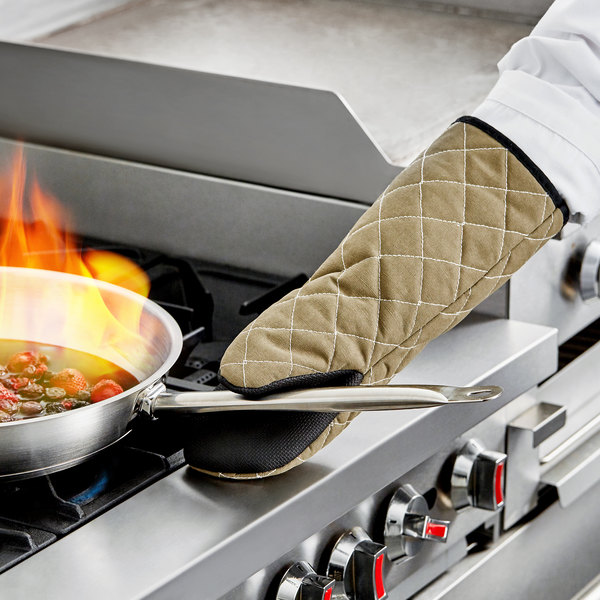Oven Mitts: What are the best materials?
Oven mitts are one of the most essential kitchen tools used for protecting your hands and wrists from the heat of hot surfaces such as ovens, stovetops, grills, and other cooking appliances. They are available in a variety of materials such as silicone, cotton, leather, and others. Choosing the best material for your oven mitts can make a significant difference in your cooking experience, and that is what we’re going to explore in this article.
- Silicone Oven Mitts
They are made of a flexible, heat-resistant synthetic material that is widely used in the kitchen. These mitts are sturdy, durable, and can withstand high temperatures up to500 degrees Fahrenheit. They are also waterproof, making them ideal for handling hot liquids and steam. Another advantage of silicone oven mitts is that they are easy to clean and maintain. You can either wash them by hand or toss them in the dishwasher.
One downside to silicone oven mitts is that they can be bulky and may not provide the same level of dexterity as other materials. They also tend to be slippery, which can make it challenging to grip hot objects firmly. This can be dangerous if you’re working with heavy or delicate items.
- Cotton Oven Mitts
They are a classic choice for many home cooks. They are affordable, lightweight, and comfortable to wear. Cotton mitts are also breathable, making them ideal for use in warm kitchens. They are usually machine washable, making them easy to clean and maintain. Cotton mitts are also available in a wide range of colors and styles, making them a popular choice for those who want to add a pop of color to their kitchen.
One downside to cotton oven mitts is that they may not provide the same level of heat resistance as other materials. They are also not waterproof, which can make them less suitable for handling hot liquids or steam. Cotton mitts can also wear out quickly, especially if exposed to high temperatures or frequent use.
- Leather Oven Mitts
They are a luxurious and durable option for those who want a high-end look and feel. Leather mitts are heat-resistant and can withstand high temperatures up to500 degrees Fahrenheit. They are also waterproof, making them ideal for handling hot liquids or steam. Leather mitts are easy to clean and maintain, and they can last for years with proper care.
One disadvantage of leather oven mitts is that they can be expensive compared to other materials. They may also be less flexible than other materials, which can make them less suitable for handling delicate or small items. Leather mitts can also be heavy and may not offer the same level of comfort as other materials.

- Neoprene Oven Mitts
They are a newer material that provides excellent heat resistance and flexibility. Neoprene is a synthetic rubber that is waterproof, heat-resistant, and durable. Neoprene mitts can withstand temperatures up to500 degrees Fahrenheit and are ideal for handling hot liquids or steam. They are also lightweight and flexible, making them easy to use for a variety of tasks.
One downside to neoprene oven mitts is that they may not be as breathable as other materials. They can also be less comfortable to wear for extended periods, especially in warm kitchens. Neoprene mitts may also be more expensive than other materials, depending on the brand and style.
- Kevlar Oven Mitts
They are a heavy-duty option for those who need maximum protection from high heat. Kevlar is a synthetic material that is used in body armor, making it ideal for protecting your hands from extreme heat. Kevlar mitts can withstand temperatures up to932 degrees Fahrenheit, making them suitable for use in commercial kitchens and outdoor grilling.
One disadvantage of Kevlar oven mitts is that they can be bulky and heavy, which can make them less suitable for handling delicate or small items. They are also more expensive than other materials, making them a less practical option for home cooks.
- Nomex Oven Mitts
They are another high-performance material used in industrial applications. Nomex is a synthetic material that is similar to Kevlar but is more flexible and lighter. Nomex mitts can withstand temperatures up to932 degrees Fahrenheit, making them ideal for use in commercial kitchens and outdoor grilling.
One downside to Nomex oven mitts is that they can be expensive compared to other materials. They may also be less comfortable to wear for extended periods, especially in warm kitchens.
Conclusion
In conclusion, there are several different materials to choose from when it comes to selecting oven mitts. Each material has its own unique set of benefits and drawbacks, so it’s important to consider your specific needs and preferences when making your selection.
Ultimately, the best choice for you will depend on your individual needs and preferences. No matter which material you choose, selecting a high-quality pair of oven mitts is essential for protecting your hands and wrists while cooking.